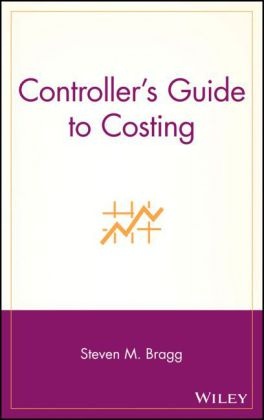Ulteriori informazioni
Informationen zum Autor STEVEN M. BRAGG , CPA, CMA, CIA, CPIM, has been the CFO or controller of four companies, as well as a consulting manager at Ernst & Young and auditor at Deloitte & Touche. He received a master's degree from Bentley College, an MBA from Babson College, and a bachelor's degree in economics from the University of Maine. Mr. Bragg resides in Centennial, Colorado. He has written over twenty books, including Accounting Best Practices , Accounting Reference Desktop , and Controllership: The Work of the Managerial Accountant , all from Wiley. Klappentext Controller's Guide to Costing is a comprehensive source for all issues related to cost accounting, detailing aspects of creating costing systems, how cost accounting systems work, interpreting the results, and how the resulting information can be used, including:* Provides an overview of various costing methodologies.* Written in easy to understand language-from one controller to another.* Includes information on application, implementation, reporting, problems that can arise, and example case studies. Zusammenfassung Controller's Guide to Costing is a comprehensive source for all issues related to cost accounting, detailing aspects of creating costing systems, how cost accounting systems work, interpreting the results, and how the resulting information can be used, including:* Provides an overview of various costing methodologies.* Written in easy to understand language-from one controller to another.* Includes information on application, implementation, reporting, problems that can arise, and example case studies. Inhaltsverzeichnis Preface. About the Author. 1 Job Costing. Nature of Job Costing. Advantages and Disadvantages of Job Costing. Job Costing Data Flow. Control Point Issues. 2 Process Costing. Nature of Process Costing. Process Costing Data Flow, Weighted Average Method. Process Costing Data Flow, Standard Costing Method. Process Costing Data Flow, the FIFO Method. Advantages and Disadvantages of Process Costing. 3 Direct Costing. Definition of Direct Costing. Uses of Direct Costing. Problems with Direct Costing. Using Direct Costing for Cost Control. Impact of Direct Costing on Reported Financial Results. Impact of Direct Costing on Inventory Valuation. Case Study. 4 Standard Costing. Purpose of Standard Costs. Problems with Standard Costs. Formulation of Standard Costs. Standard Costs for Pricing. Standard Costs for Budgeting. Standard Costs for Inventory. Standard Cost Entry. 5 LIFO, FIFO, and Average Costing. Last-In First-Out Method. First-In First-Out Method. Average Costing Method. 6 Throughput Costing. Throughput Definitions. Throughput Model. Throughput Accounting and Volume Purchasing Decisions. Throughput Accounting and Capital Budgeting Decisions. Throughput Accounting and Outsourcing Decisions. Throughput Accounting and Unprofitable Products. Throughput and Traditional Accounting Compared. Problems with the Throughput Model. Reporting with the Throughput Model. Systemic Changes Required for Acceptance of the Throughput Model. 7 Joint and By-Product Costing. Nature of Joint Costs. Reasoning Behind Joint and By-Product Costing. Joint Cost Allocation Methods. Pricing of Joint Products and By-Products. 8 Activity-Based Costing. Shortcomings of Traditional Cost Allocation Systems. Overview of Activity-Based Costing. Problems with Activity-Based Costing. Implementing an Activity-Based Costing System. Bill of Activities. Uses of Act...

